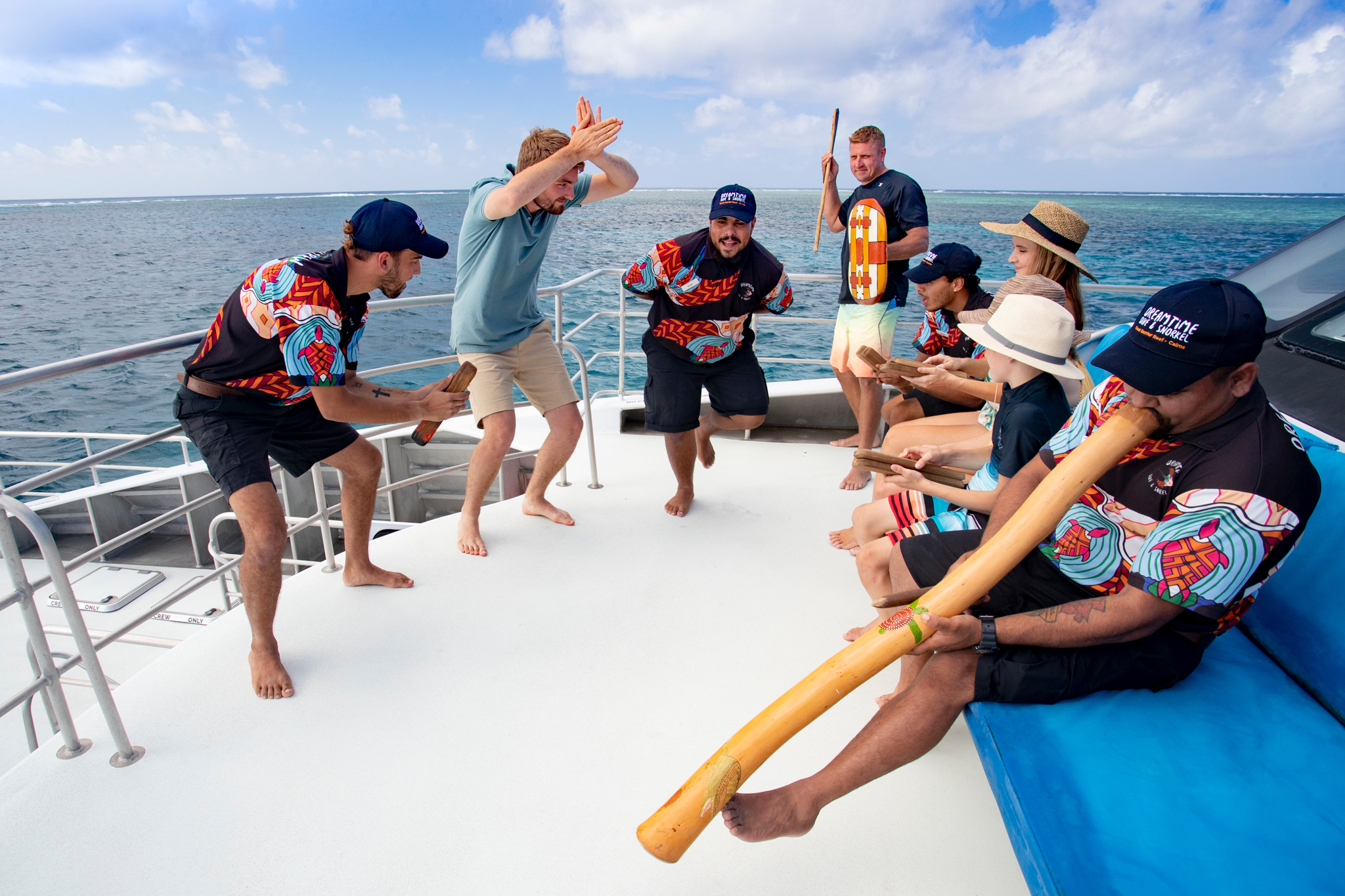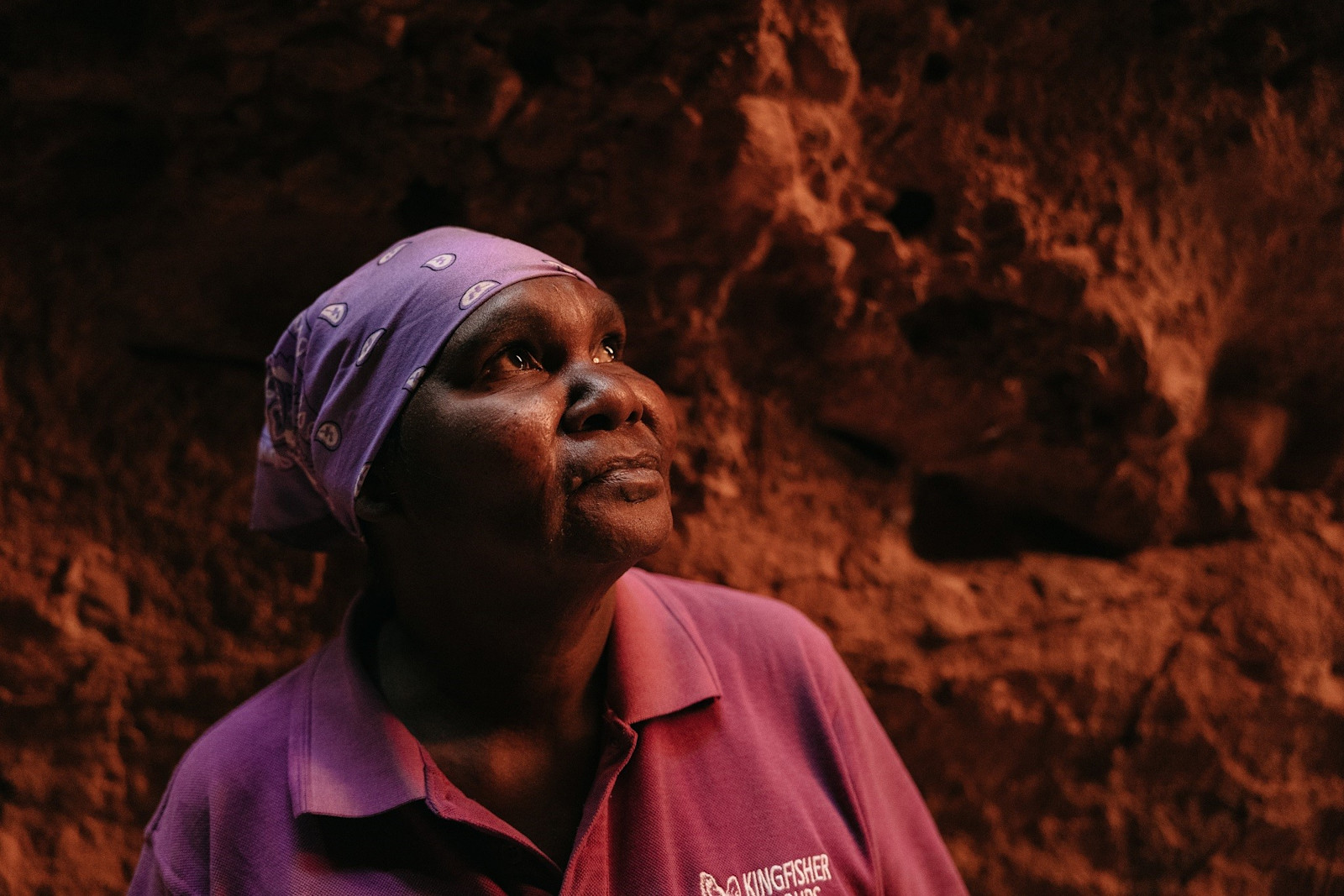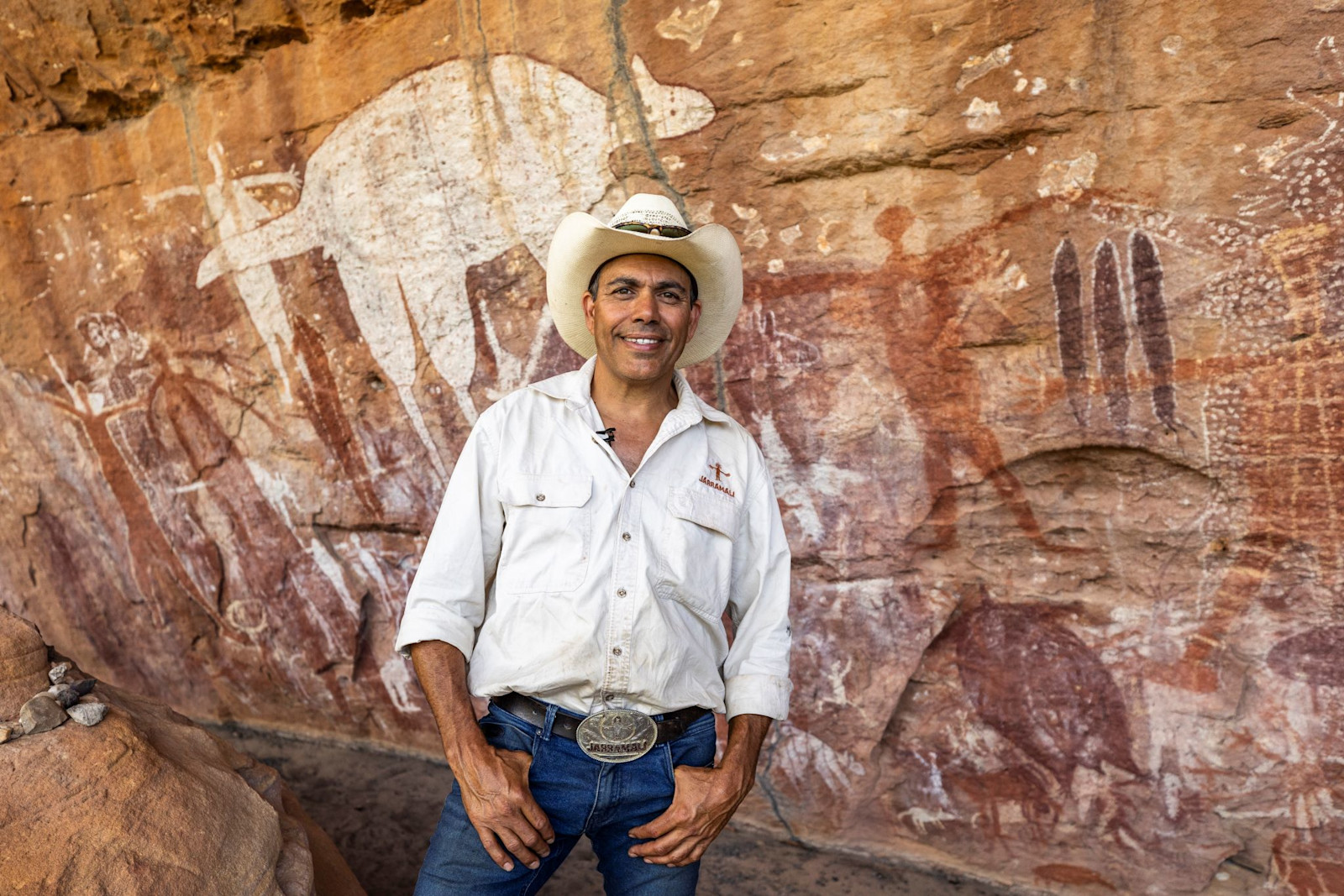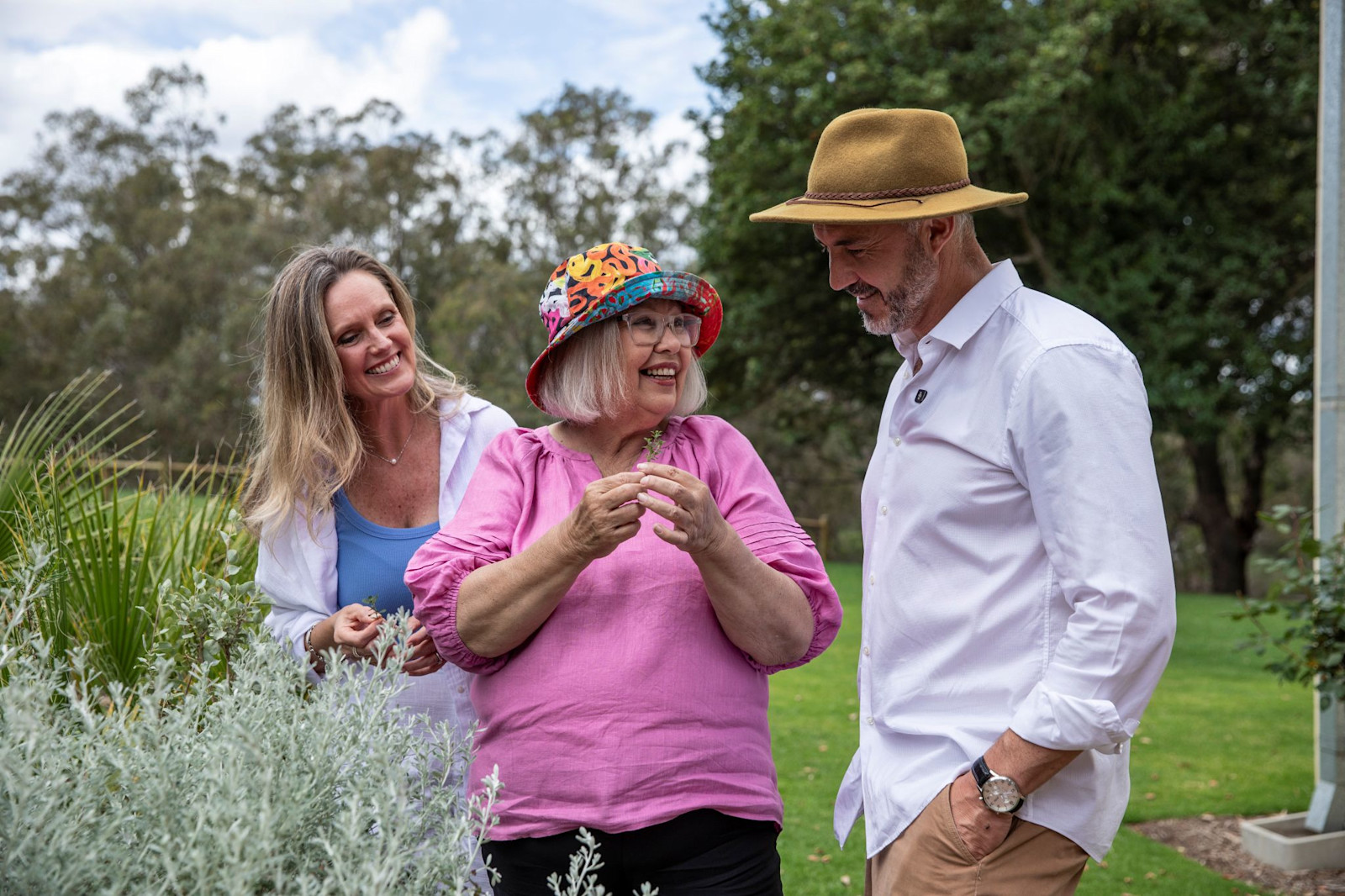Guide to the didgeridoo in Aboriginal cultures
The didgeridoo, the world’s oldest instrument, is hard to master—but in skilled hands, its sound captures the mystery and magic of the Dreaming.

Guide Josh Whiteland playing the didgeridoo, Margaret River, Western Australia © Tourism Australia
The world’s oldest instrument, the didgeridoo is arguably one of the most difficult to play. But when you hear a professional performance, it hits all the right notes and evokes the mystery and magic of the Dreaming.
What is the didgeridoo?
You won’t forget the first time you hear a didgeridoo, its haunting sounds ranging from a basic drone to rhythm-setting and trumpeting. This distinctive wind instrument is traditionally made from hard wood, naturally hollowed out by termites. “The length, diameter and texture of the wood all affect the tone and pitch, with no two didgeridoos producing the same sound,” says Josh Whiteland, owner of Koomal Dreaming tours in the Margaret River Region of Western Australia. They’re also completely unique in decoration – hand-painted designs are passed on from generation to generation, representing different clan and totemic patterns (spiritual emblems taken from nature).
Where did the didgeridoo originate?
While Aboriginal communities around Australia today perform the didgeridoo, the instrument is said to have originated in the Northern Territory’s remote Arnhem Land region. The yidaki – didgeridoo in the local Yolŋu language – is a profound part of Indigenous cultures, and is celebrated at the annual Garma Festival, one of Australia’s most significant Aboriginal events. When is the didgeridoo played?
In Aboriginal cultures, the didgeridoo is used in both ceremonies and informal settings, often as an accompaniment to chanting, singing and dancing. The music of traditional didgeridoo players is deeply related to Country and spirituality, with sounds of the instrument mimicking nature – animals, humans, the wind and the sea – filled with deep cultural meaning.

Elder Kevin 'Gavi' Duncan playing the didgeridoo at Firescreek Botanical Winery, New South Wales
Who traditionally plays the didgeridoo?
It’s important to be sensitive to cultural norms when reaching for a didgeridoo, as in some Aboriginal communities playing the instrument is off-limits to women. “Traditionally, the didgeridoo is just played by men,” says Josh. “It teaches men and boys to build their capacity and resilience within.” Be mindful that a woman given permission to play should not be photographed or filmed doing so. If you’re unsure whether it’s appropriate to play, just ask.
How is the didgeridoo played?
While performers make playing the didg look easy, “perfecting the technique takes a lot of practice,” says Aboriginal Elder Kevin ‘Gavi’ Duncan. “It requires circular and wobble (pulse) breathing. If you’re not familiar with either, you might find yourself spluttering!” Something that Gavi never does during his trance-like demonstrations of the instrument during the Aboriginal Storytelling and Wine Tasting Experience on the lush grounds of Firescreek Botanical Winery on the New South Wales Central Coast.

Dreamtime Dive & Snorkel, Great Barrier Reef, QLD © Tourism and Events Queensland
Where can I catch a didgeridoo performance?
The style of didgeridoo performance and stories told varies across the country. In Tropical North Queensland, guests are introduced to Kuku Yalanji culture amid World Heritage-listed tropical rainforest during a candlelit open-air dinner at Flames of the Forest, replete with Aboriginal storytelling, didgeridoo and song. Also in the region, day cruises to the Great Barrier Reef from Cairns / Gimuy with Dreamtime Dive and Snorkel weave together Creation stories with didgeridoo demonstrations and dance, before you explore the World Heritage Site with Indigenous Sea Rangers.

Guide playing the didgeridoo at Pamagirri Aboriginal Experience, Rainforestation Nature Park, Kuranda, Queensland
Back on land, an orchestra of didgeridoos echo through the Queensland rainforest during the Pamagirri Aboriginal Experience at Rainforestation Nature Park. Talented musicians can imitate the sounds of kangaroos and kookaburras. Also in Queensland, set sail down the Mooloolah River on the Sunshine Coast with Simon Thornalley, skipper and co-owner of Saltwater Eco Tours. Settle in on the deck of the Spray of the Coral Coast while Simon reaches for his didgeridoo to serenade you as you set sail.

Saltwater Eco Tours, Mooloolaba, Queensland © Tourism Australia
Koomal Dreaming’s Josh Whiteland is not only a talented guide, but also a musician. A Wadandi man, Josh offers walking tours through Western Australia’s spectacular Ngilgi Cave, where you linger for a magical didgeridoo performance, amplified by the cave’s natural acoustics. “The didgeridoo isn’t just something to be heard. It’s something that is felt. There’s a rumbling vibration that dances over the skin and beats deep within your chest,” says Josh. Further north in the state’s Shark Bay region you can spend an evening beside the campfire with Darren ‘Capes’ Capewell on a Wula Gura Nyinda Eco Cultural Adventures’ Didgeridoo Dreaming Night Tour. Capes will regale you with Dreaming stories relating to the constellations twinkling above, before belting out a couple of tunes on his didgeridoo, its resonant and tribal tones echoing across the star-bedazzled sky.
Ngaran Ngaran Culture Awareness takes people on a deep cultural immersion into Yuin country, a five-hour drive south of Sydney in Narooma. The group’s Yuin Retreat experience offers the chance to take part in ceremonies involving dance and yidaki (didgeridoo).
Where can I buy a didgeridoo? Even if you don’t have the patience to play, didgeridoos make impressive pieces of artwork. In the Kimberley region of Western Australia, Waringarri Aboriginal Arts & Tours is an art centre that draws more than 100 Miriwoong artists in to practice their craft, which includes painting didgeridoos. You can also learn the techniques used to paint instruments (and other forms of art) at the Gallery of Central Australia, part of Ayers Rock Resort at Uluru. Each purchase gives back to its creator, directly and ethically.












